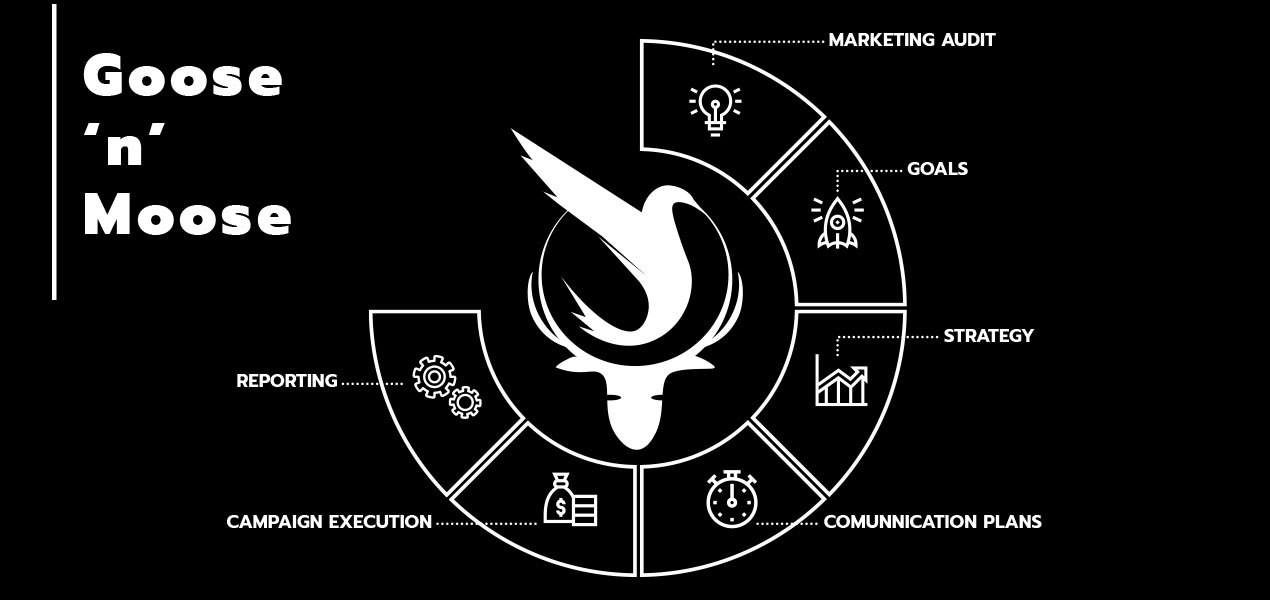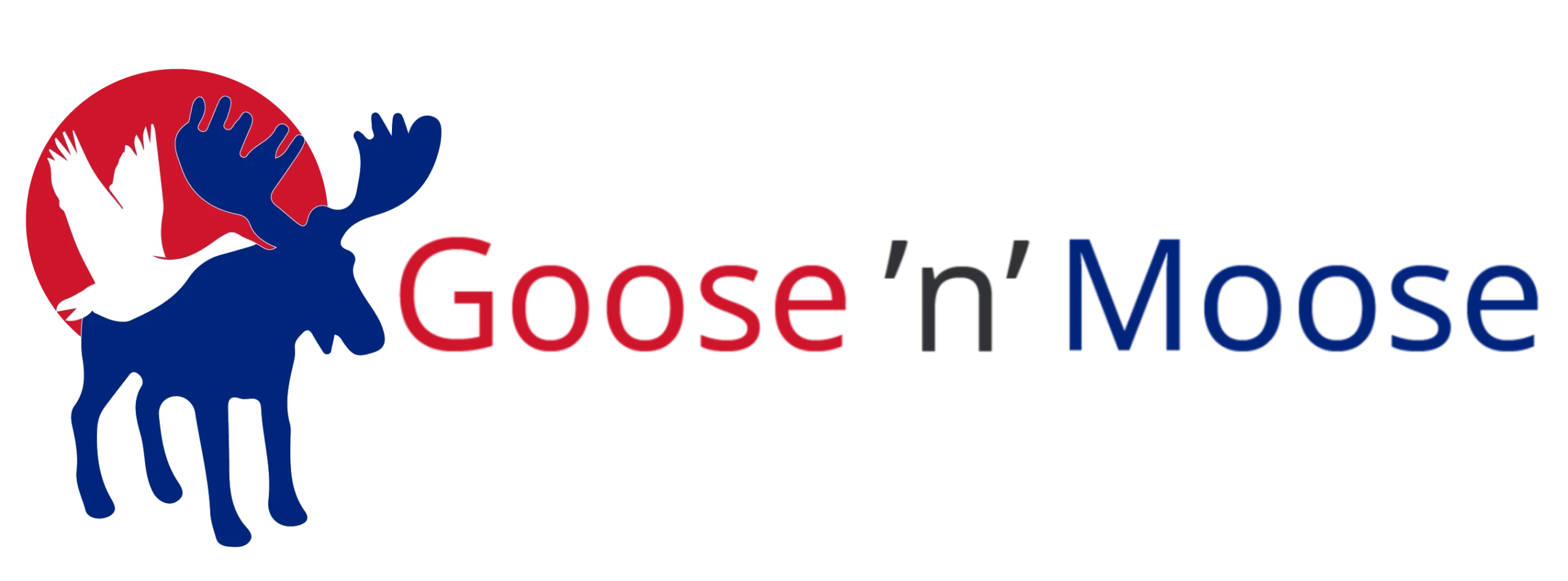SOSTAC® is probably the most well-known planning framework for digital marketing strategy and activities. It is not a linear process but a circular one where 6 concrete steps follow one another – Situation Analysis, Objectives, Strategy, Tactics, Action and Control. This is a very logical and structured way of working, so at Goose’n’Moose we use almost the same methodology but use a different vocabulary for the various steps. In this article, we will focus on each of these key steps and give examples of how our marketing team can help you achieve each milestone.
The great thing about partnering with Goose’n’Moose on end-to-end digital marketing planning and execution is that you will have a holistic view of all 6 steps in a single document which is dynamic, collaborative and very intuitive.

The marketing audit (Situation analysis)
This is a very time consuming but critical moment towards building your digital marketing presence. At this point we do in-depth research on:
- Market trends
- Customer profiles, needs and insights
- Competitors
- Internal strengths and capabilities
For our client ManagePlaces, we performed competitor analysis of over 20 rivals in the market. This is not a one-off exercise – we do monthly check ups for key competitors and update the competitor knowledge base dynamically. The same goes for industry news and key trends in the market. This is part of our on-going marketing support.
Goals (Objectives)
Based on the findings from the audit we set up strategic goals with the following metrics:
- Revenue
- Number of leads generated
- Community size
- KPIs related to service quality, word of mouth and customer retention
For our clients we hold monthly meetings where we review these high-level strategic goals and set out priorities based on the current market circumstances.
Strategy
In this step we define the ideal market in terms of segmentation, the client’s positioning in each segment, the pricing strategy and the communication channels to be used for reaching the intended audience. Pricing strategy is something our clients normally decide on their own but we can support you with this, as well.
For Blue Tea Software, we defined 3 strategic industry segments – retail, healthcare and finances. For each segment we have specific content plans and campaigns. For ITSL Group, the market is segmented based on product and service needs and client company size. For example, ITSL’s thermal imaging solutions cover 3 different segments with 3 different offerings. For ManagePlaces, where a single niche segment is served – construction companies, Goose’n’Moose helped to redefine the pricing ranges for the platform’s different subscription plans.
Communication Plans (Tactics)
The previous steps narrow down to a concrete communication plan consisting of:
- Channels – We focus on particular public communication channels – website, landing pages, third party publications, social media platforms etc.;
- Content plan – High-level definition of topics that will be communicated via the channels above;
- Social media plan – Frequency and type of social media content to be published on a weekly basis;
- Paid advertising plan – Budgeting and various campaigns within Google Ads, Linkedin Ads and other platforms, if required;
- Public relations plan – Definition of specific campaigns for media exposure and outreach;
On top of these standard planning steps, for ManagePlaces we developed an additional re-launch communication plan focused entirely on rolling out the new improved project management platform. The plan consisted of elements mentioned above, but also email and CRM campaigns for all existing users (active and non-active).
Campaign Execution (Actions)
This is a very concrete step where we assign responsibilities to our team members – specific content topics to write about with deadlines, publish dates, priority, proposed content structure etc. The social media calendar is also very specific by day and topic (currently planning a year ahead with minor tweaks along the way). We use the project management platform Jira internally to assign tasks and track campaign progress.
A critical point here is the approval process we build with our partners – normally this is done in a single touchpoint each week to keep the process efficient. We aim for the best quality of our marketing campaigns, so a final sign-off of every single communication piece is essential.
Reporting (Control)
Last but not least, we track digital marketing performance on several platforms – Google Analytics, Zoho Social, the partners’ CRM systems and so on. We build monthly reports based on verified numbers and look at the overall performance trends.
Keeping a close eye on these reports, helps us refocus our attention on important campaigns and de-prioritise on others. Budget optimisation is also not possible without the reliable stats of a campaign’s performance.
If you need more details about our methodology, reach out to us and we can explore ways of partnering up!
